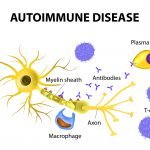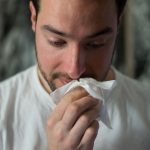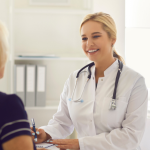Microneedling and PRP: A Formula for Stimulating Hair Regrowth
JANNINE KRAUSE, ND, EAMP
As a practitioner that has used microneedling for the past 8 years, I would consider it one of the most effective therapies for skin rejuvenation and anti-aging therapy. Originally developed in the 1990s for treating scars and age-related skin changes, it’s evolved into a primary therapy for conditions like acne scarring, fine lines, wrinkles, for creating more evenly toned and firmer textured skin, and even for hair loss. With its increased popularity among acupuncturists and in integrative skincare clinics, I have seen the combined use of microneedling with vitamins, platelet rich plasma (PRP), botanicals, and/or peptides become more common. I have also tried many such formulations, and through extensive experience, I have found a number of important adjuncts to microneedling that enhance the results for my patients. So, when I began to see patients coming in with hair loss due to infection with COVID-19, I was moved to do some additional research to see what else might be helpful.
Telogen Effluvium?
Hair loss due to telogen effluvium is when a stressor causes the body to prematurely push hair roots into the resting state. There are a variety of causes, including major psychological stress, medication, and severe infection – like COVID-19 – and it can result in losing “handfuls” of hair at a time. Knowing the benefits of biotin and pantothenic acid (vitamin B5) for hair growth, and that PRP combined with hyaluronic acid was very effective for skin rejuvenation, I looked into research involving microneedling and these other therapies. As it turned out, there were multiple studies that demonstrated the benefits of scalp microneedling, biotin, and platelet rich plasma (PRP) for hair loss.1-3 There were also comparative studies that highlighted the combined use of microneedling with pharmaceutical hair growth topicals.4-6 There was even one study that was specific to complimentary therapies for post-COVID telogen effluvium.7 I began formulating while I read.
Combination Therapy
Based on the research evaluated, the best argument can be made for combining microneedling with biotin, PRP, and medicated hair growth solutions. Because many of my patients would refuse a pharmaceutical medication, I was motivated to find my own, non-toxic combination. After testing and adjusting dosages over time, I determined that the following formula is most likely to effectively stimulate hair regrowth when combined with microneedling. It is important to note that each component should be kept in its own syringe and should not be mixed prior to application. The amounts given are what I use when treating the entire scalp.
Formula to Stimulate Hair Regrowth
- 3 mL of autologous PRP
- 1 mL of Biotin (10 mg/mL solution)
- 1 mL of combined pantothenic acid/hyularonic acid serum
Treatment Protocol
Microneedling treatments for hair regrowth are performed monthly. A series usually lasts 8-12 sessions, depending on progress, and hair regrowth is generally visible within 3-5 visits. Before each individual treatment, the scalp is numbed using a topical anesthetic (benzocaine 20%, lidocaine 4%, tetracaine 2%). Because numbing takes approximately 20 minutes, I include acupuncture and red light therapy to stimulate cells prior to treatment. The numbing agent is then washed from the scalp, and using a pen-type device, I begin the microneedling treatment. I apply the hair regrowth formula in sections as I work along different areas of the scalp. This, along with keeping each part of the formula in separate syringes, helps to ensure the stability of the individual components.
Post treatment, the scalp is left with the formula on it. Patients are advised to have a hair wrap or a hat to wear home, and I recommend not washing the hair till the next morning to allow for the solutions to fully penetrate the scalp.
One of the benefits of microneedling is that downtime is minimal and post-treament discomfort is described as similar to a minor sunburn. After each treatment, the scalp will be sensitive and exposure to direct sunlight is also discouraged for at least 48 hours. In addition to the specific protocol, initial lab testing and at-home care are important considerations for treatment success.
Lab Testing
Prior to treatment, I evaluate the following parameters:
- CBC with differential and platelets
- C-reactive protein
- Red blood cell magnesium
- Biotin
- Vitamin B12
- Folate
- Iron status (iron, total iron binding capacity, ferritin)
- Hormones (di-hydrotestosterone, testosterone, DHEAS, estrogens, progesterone)
- Nitric oxide (salivary)
If the patient is open to advanced testing, I will order a dried urine hormone metabolite test and a salivary cortisol test to screen for imbalances that could be missed with traditional serum hormone assays. Once labs have been evaluated, any indicated dietary changes or nutritional supplements can be implemented concurrently with the microneedling treatments.
At-Home Care
As I have seen with skin care, the more effort patients put into their home treatment, the better the results. To help maximize hair regrowth, some patients purchase red light therapy devices and wear a hats daily. Between microneedling sessions, patients will also come into the office for acupuncture and red light therapy to the scalp. If they have not purchased a home system, I like to see patients 1-2 times per week for these treatments. This schedule can be adjusted depending on purchase of a home system, patient resources, and needs.
Iron rich, blood strengthening foods are recommended in addition to any supplementation found to be necessary (based on lab work). I also recommend patients perform a nightly scalp massage using a combination of essential oils. I add 1 drop each of rosemary, eucalyptus, and rose hips essential oils per 1 tbsp organic carrier oil. Patients are instructed to use a nickel sized amount of oil and gently rub it into the scalp for roughly 5 minutes per night.
A Success Story
I began working with a 60-year-old female who presented to my clinic roughly 3 months after recovering from COVID-19. She was hospitalized for her infection for 2 weeks due to multiple blood clots in her legs. While she was in the hospital, she began losing hair, and this continued during the first 3 months of her recovery. Prior to COVID, she had very thick, long, dark, curly hair. When I began working with her, she had diffuse hair loss throughout her entire scalp, with extensive thinning and breakage of her hair. She was terrified she would become completely bald. Due to the multiple anti-clotting medications she was still taking after her release from the hospital, we determined it was best to wait to initiate treatment until after these medications were discontinued.
While we were waiting for her to be able to discontinue her medications, I prescribed her the essential oils and nightly scalp massage mentioned previously. When cleared for microneedling, I scheduled her for 1 session per month over the following 12 months. After 2 sessions, she noticed new hair growth starting throughout her scalp. By the 6th session, the new hairs were continuing to grow and the density of new growth was increasing. By the 9th session, her stylist was able to cut her hair in a manner that was similar to her original hairstyle. By the time this article is published, I will be performing her 10th treatment, and I look forward to seeing her progress.
Managing Expectations
In my experience, roughly 75% of patients will see new hair growth by the 5th microneedling session. I have had patients that discontinue treatment after only 3-4 sessions because they wanted faster results, which is unfortunate. Microneedling is incredibly helpful for hair regrowth, but it does take time and some specific effort to be effective. Counseling patients about what to expect can be very helpful in setting them up for success.
During each patient’s initial visit, I make sure to schedule enough time to answer any questions they may, and I use a detailed consent form specific to microneedling and treatment for hair loss. I make sure to outline what progress looks like and to discuss the stages of hair regrowth. Generally, treatment duration and efficacy depends on the severity and duration of the initial hair loss. In some cases, it may extend beyond 12 months if hair regrowth takes longer to be stimulated. Bald spots can be treated independently of the rest of the scalp, while diffuse hair loss and thinning may require the treatment of the entire scalp.
Microneedling is an excellent modality and its effects on the skin are often rapid. When it comes to stimulating hair regrowth, however, much of what is happening will not be visible to patients for weeks or months after treatment. It is important for patients to understand that though seeing new hair growth is promising, it does not mean that treatment should be discontinued prematurely.
Conclusion
Anti-aging and esthetic therapies are not simply about correcting a patient’s desire to look differently. When it comes to treating the whole person, it is important to remember that outward expressions of beauty can have very real impacts on physiology. The stress my patient was experiencing when she was losing her hair, the confusion and fear it was causing her to not know whether it would ever grow back, these are undeniable feelings that were complicating her overall recovery from COVID and could have further compromised her health moving forward.
With therapies like microneedling, wholistic-minded practitioners have the ability to address factors that not only treat physiological health, but also its outward expression. If you do not plan on practicing microneedling, teaming up with an esthetician in your area that offers this type of therapy is a wonderful way to offer a non-toxic and wholistic approach to patients struggling with hair loss. As the population ages, finding similar creative ways to add in anti-aging therapies to your practice will not only help with your bottom line, it will also help you offer options for those wanting to look as amazing as they feel from your work together!
[Refs]- English RS Jr, Ruiz S, DoAmaral P. Microneedling and Its Use in Hair Loss Disorders: A Systematic Review. Dermatol Ther (Heidelb). 2022;12(1):41-60.
- Patel DP, Swink SM, Castelo-Soccio L. A Review of the Use of Biotin for Hair Loss. Skin Appendage Disord. 2017;3(3):166-169.
- Gentile P, Garcovich S, Bielli A, et al. The Effect of Platelet-Rich Plasma in Hair Regrowth: A Randomized Placebo-Controlled Trial. Stem Cells Transl Med. 2015;4(11):1317-1323.
- Starace M, Alessandrini A, Brandi N, Piraccini BM. Preliminary results of the use of scalp microneedling in different types of alopecia. J Cosmet Dermatol. 2020;19(3):646-650.
- Dhurat R, Mathapati S. Response to Microneedling Treatment in Men with Androgenetic Alopecia Who Failed to Respond to Conventional Therapy. Indian J Dermatol. 2015;60(3):260-263.
- Fujita J. Favorable effects of microneedling on long-standing androgenetic alopecia in an elderly man: A case report. J Cosmet Dermatol. 2021;20(2):588-590.
- Popescu MN, Berteanu M, Beiu C, et al. Complementary Strategies to Promote Hair Regrowth in Post-COVID-19 Telogen Effluvium. Clin Cosmet Investig Dermatol. 2022;15:735-743.
Jannine Krause, ND, EAMP, is a naturopathic doctor, acupuncturist, and host of the podcast “The Health Fix.” Dr Krause specializes in helping women over 35 improve their physical and mental performance and feel less sore – all while looking amazing every time they walk out the door. When not in the office or on a podcast, Dr Krause can be found helping ladies via her online programs at doctorjkrausend.com.









